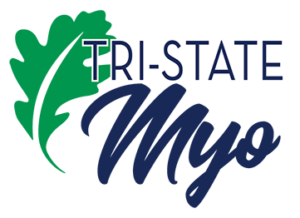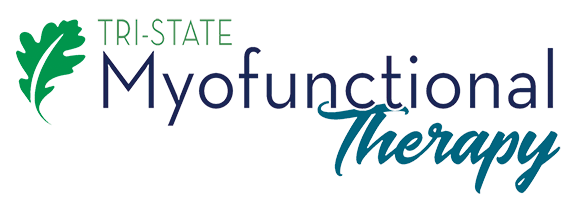Frequently Asked Questions (FAQs)
We’ve attempted to answer many of the questions you may have about therapy, disorders and our practice. If we haven’t covered something below, please contact us with your questions and we’ll get back to you shortly.
What is Orofacial Myofunctional Therapy (OMT)?
Orofacial Myofunctional Therapy is neurological re-education exercises to assist the normalization of the developing, or developed, craniofacial structures and function. It is related to the study, research, prevention, evaluation, diagnosis and treatment of functional and structural alterations in the region of the:
- mouth (oro)
- face (facial) and
- regions of the neck (oropharyngeal area).
What is Orofacial Myofunctional Therapy (OMT)?
Orofacial Myofunctional Therapy is neurological re-education exercises to assist the normalization of the developing, or developed, craniofacial structures and function. It is related to the study, research, prevention, evaluation, diagnosis and treatment of functional and structural alterations in the region of the:
- mouth (oro)
- face (facial) and
- regions of the neck (oropharyngeal area).
What is the difference between nasal breathing and mouth breathing?
How will my appearance change with Myofunctional Therapy?
Am I too old for Myo therapy?
What is a tongue tie?
Tongue-tie is a term used to characterize a common condition that often goes undetected. It occurs during pregnancy when a small portion of tissue that should disappear during the infant’s development remains at the bottom of the tongue, restricting its movement. When an infant is born with tongue-tie, it is important to research other family members, since this change has a genetic influence.
What are the symptoms of a tongue tie?
People who are tongue-tied often breathe through their mouth. This leads to a wide range of myofunctional problems and symptoms. Chronic jaw pain, sleep apnea, facial pain, headaches, and clenching and grinding, along with dental and orthodontic issues are common in people with tongue-ties. Research shows that tongue-tied children are at higher risk to develop sleep apnea and airway issues, and their facial and cranial development is also impacted.
What is a frenectomy?
The tongue-tie release procedure is most commonly called a frenectomy, but there are other terms used as well such as frenotomy or frenuloplasty. A frenotomy is a minor incision into the connective tissue at the bottom of the tongue to free the tongue from the floor of the mouth. This is usually done for babies. The full frenectomy procedure is also known as a or frenuloplasty or functional frenuloplasty.
This involves removing or altering the connective tissue under the tongue.
Frenectomy procedures are low risk, generally using local anesthetic. The procedure is done with a laser, a scalpel, or scissors. Depending on the release provider, sutures may or may not be used.
It is important to discuss the procedure in depth with a provider your Myofunctional Therapist will recommend for you. Wound healing will take about 2 weeks. And post -release stretches and exercises are essential to ensure proper healing and minimize re-attachment of the frenulum. Pain is not usually a major factor and can be controlled with OTC pain relievers discussed with the release provider.
What is the difference between an anterior and posterior tongue tie?
Posterior tongue-ties are not obvious and can be difficult to detect without specialized training. With posterior ties, the back part of the tongue is restricted rather than the front portion of the tongue and the restriction is very different.
Posterior tongue-ties can be difficult to diagnose because the other muscles of the face and mouth compensate for the restriction. One way to identify a posterior tie if the floor of the mouth lifts up in order to for the tip of the tongue to lift. Often people with this tie can stick their tongue out far, and the front part of the tongue can lift up.
When other muscles of the mouth and face these muscles compensate because of a posterior tongue tie, we see pain and tension all throughout the neck, face, jaw, shoulders, and more. This can lead to clenching, grinding, TMJ problems, postural problems, as well as sleep apnea or other sleep disordered breathing conditions. Babies with a posterior tongue-tie may also have difficulty breastfeeding.
This involves removing or altering the connective tissue under the tongue.
Frenectomy procedures are low risk, generally using local anesthetic. The procedure is done with a laser, a scalpel, or scissors. Depending on the release provider, sutures may or may not be used.
It is important to discuss the procedure in depth with a provider your Myofunctional Therapist will recommend for you. Wound healing will take about 2 weeks. And post -release stretches and exercises are essential to ensure proper healing and minimize re-attachment of the frenulum. Pain is not usually a major factor and can be controlled with OTC pain relievers discussed with the release provider.
Why does someone clench or grind their teeth?
Clenching or grinding your teeth is a sign that there is an airway issue. When you stop breathing in your sleep, your brain sends a signal to your mouth to clench or grind so that your mouth will open. Often, it is a sign of a tongue-tie and that your tongue is sitting low in your mouth and falling back into your airway therefore limiting oxygen to the body.
What are the symptoms of TMD (temporomandibular disorder?)
The symptoms of temporomandibular disorders can include:
- Jaw and facial pain, tension, and stiffness
- Pain and tension that radiates into the neck, shoulders, and upper body
- Earache
- Hearing difficulties
- Tinnitus (ringing in the ears)
- Headaches
- Toothaches
- Clicking or grating sounds when opening the mouth, yawning, or chewing
- Clenching and grinding of teeth
- Difficulty opening the mouth wide or yawning
- Difficulty chewing
- Locking open of the jaw
- Dizziness
What is TMD?
Temporomandibular disorders or TMD refers to any pain, discomfort, dysfunction, or tension related to the jaw. Often, it is also called TMJ syndrome.
It can be a challenge to determine the cause of these temporomandibular disorders because there are many factors that can contribute. These factors include, but aren’t limited to:
- Genetics
- Epigenetic changes
- Trauma
- Age-related degeneration
- Autoimmune conditions such as arthritis and rheumatoid arthritis
- Nutritional and dietary issues
- Chronic stress
- Postural and structural issues
- Tongue-tie
- Teeth clenching and grinding
- Improper chewing or swallowing patterns
- Incorrect tongue resting posture and mouth breathing
- Malocclusion
- Persistently sleeping on one side
Anything that affects the functionality or structure of the temporomandibular joint can lead to TMJ dysfunction, pain, tension, and a wide range of other symptoms.
How Can Myofunctional Therapy help with TMD?
The Orofacial Myofunctional Therapy Specialist, after conducting a thorough assessment, working in an allied approach, may apply techniques to rebalance the muscles of the mouth, face and neck, and restore the functions of breathing, chewing, and swallowing.
With this, there may be attenuation and/or elimination of the signs and symptoms of TMD. The patient should be made aware about any harmful oral habits and oriented to contribute to the evolution of its clinical case.
Why do the upfront costs seem like a lot?
We work with every budget and have several options for treatment to meet our patients needs. Most patients are able to save themselves the extra time in braces or need to spend money for braces again. They save money by not breaking any more teeth or needing new night guards. The initial investment is designed to save you money for years to come!
Do you accept insurance?
We know that healthcare costs can add up, but Tri-State Myofunctional Therapy cannot directly bill insurance. We are a fee-for-service practice. Working with a fee for service practice ensures the treatment plan costs more transparent for both the provider and the patient, and allows us to work for you rather than insurance companies.
Costs are laid out up front and there are no hidden fees, co-pays, or premiums. The Tri-State Myo team prefers to work directly for the patients that hire us, rather than for insurance companies that dictate the time spent with patients and determining what is worth spending time on.
We do understand that cost can be a barrier and we have options for financing. We can accept FSA and HSA health accounts as a form of payment and provide the appropriate receipts.
Who do you serve?
Tri-State Myofunctional Therapy treats children and adults. Our in-person service area is Hagerstown and Frederick, MD and Martinsburg, WV and surrounding areas. We also have the ability for tele-health appointments for those outside our in-person service area.

© Tri-State Myofunctional Therapy
Serving Hagerstown and Frederick, MD, Martinsburg, WV, East Berlin, PA and beyond
Address
201 Prospect Ave
Hagerstown, MD 21742
Hours
Sunday – Closed
Monday – 11am – 7pm
Tuesday – 11am – 6pm
Wednesday – 11am–5pm
Thursday – 10am-5pm (East Berlin location)
Friday – 1pm – 5pm
Saturday – Closed
